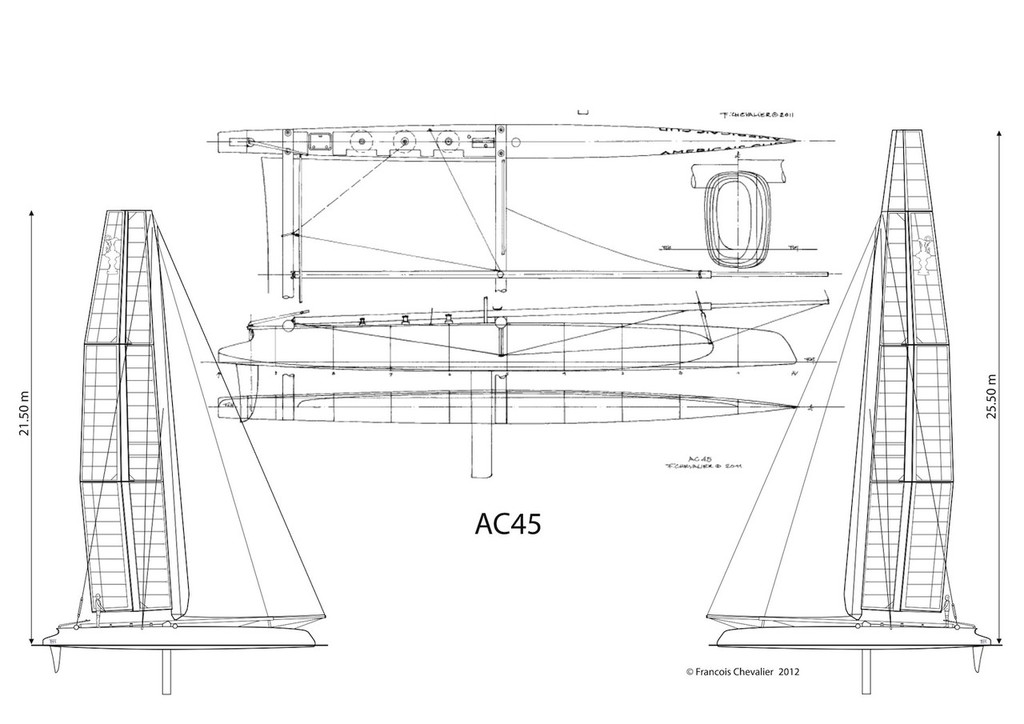AC45 Designs - Lines and sail plans - first time published on the web
by Jacques Taglang on 14 Apr 2012

©François Chevalier - Lines & Sail plans of the AC45 with its two wing versions - AC45 designs - AC45 lines and sail plans Jacques TAGLANG
French designer, François Chevalier has kindly provided a set of lines planes for the AC45 - the first time these have been published. Also included are the two sail plans for the stock wingsail and with the five metre extension.
He writes: When we drew these plans we were able to see moulds of the hulls that everybody could access on the official website. So we were able to draw the lines plan with relatively good accuracy. As soon as the boat got her beams, we were able to finalize the deck plan.
The development of the AC45 lines plan, computer designed should answer to multiple purposes in order to be able to maneuver leeward with the windward hull well above water. The bow should be as narrow as possible without to run into the first wave and to give crew and wing a toss! Thus the half forward part of the hull needed significant reserve buoyancy.
Indeed, in contrast to the C Class catamaran, the AC45 owns a generous headsail wardrobe. To reduce frictional surface with the water, the shape of the bottom should be as round as possible without being too deep. In the same way, the top of the hull should allow the best water flow that would over-helm the bow. From the central beam, the hull forms are slightly flatter in order to facilitate surfing but also sufficiently round for reducing the wetted surface.
In view of the he power of the wing, as soon as its incidence is trim with a maximum lift, the aft volumes are never sufficient to prevent the boat cambering. In the opposite, there are never enough forward volumes to avoid diving during collision with a wave at full acceleration.
For maintenance and reliability reasons, the wing of an AC45 has a deliberately simplistic conception. It has only two mobile profiles while 24 years ago the catamaran Stars & Stripes had a wing fitted with a trailing edge steerable on the profile support. The crews have enjoyed to the practical implementation of this first step aboard these new generation racers. It will be quite different aboard the AC72. Here, the conception of the wing elements is free but inside a fairly strict perimeter. We will talk about later.
To conclude, it should not be difficult to design a faster catamaran than the AC45. However it was not the goal, and despite the above, it is a fantastic toy!
AC 45 data:
Designers: Oracle Design Team & Mike Drummond
Builder: Core Builders (NZ), Cookson Boats (NZ)
Launching date: January 17th, 2011
Type: Wingsail catamaran
LOA: 44.13’
LWL: 44.13’
Beam: 22.6’
Draft:
Displacement: 1.400 kg
Mast height: 70.5’
Sail Area – wing + reacher: 1430 sq. ft. (up wind)
Sail Area – wing + gennaker: 2,259 sq. ft. (down wind)
For more on these projects see: www.chevaliertaglang.blogspot.com/
If you want to link to this article then please use this URL: www.sail-world.com/96071